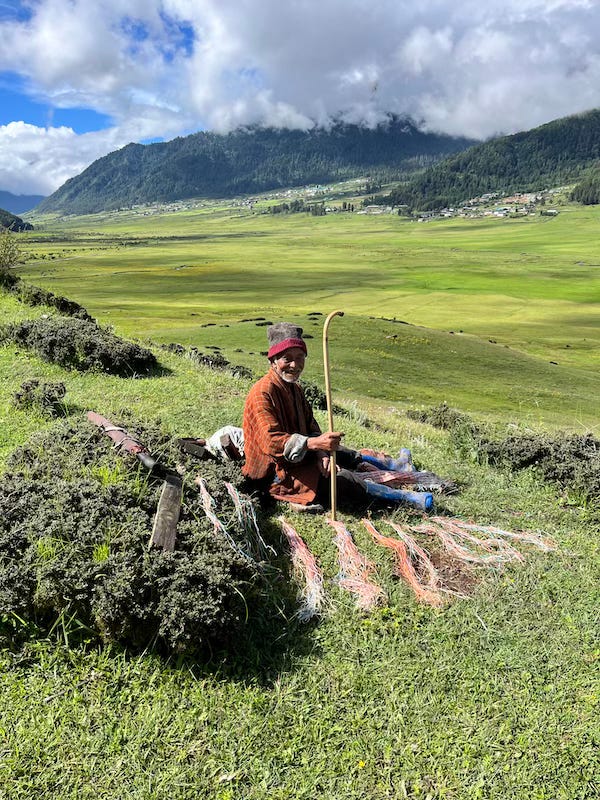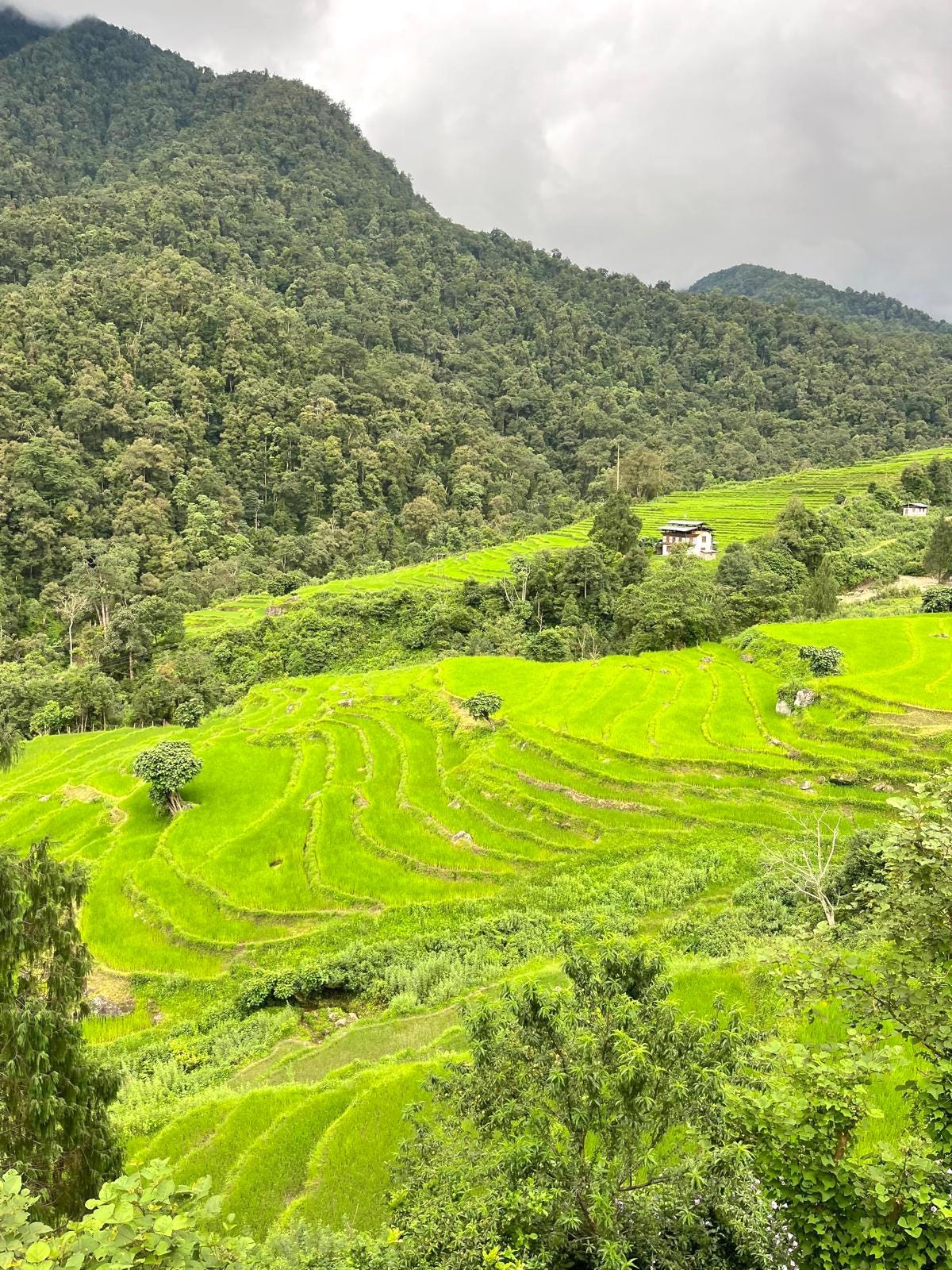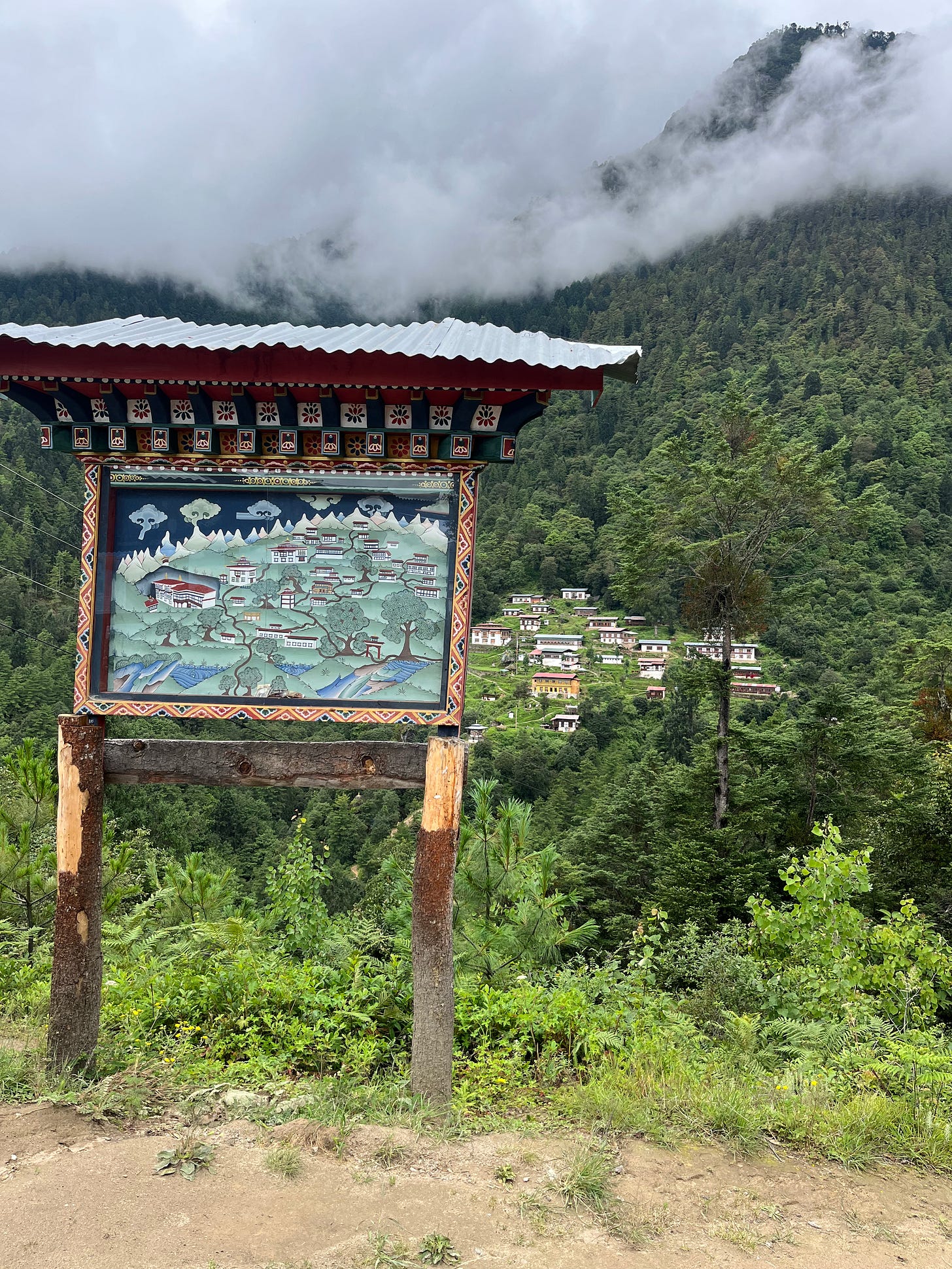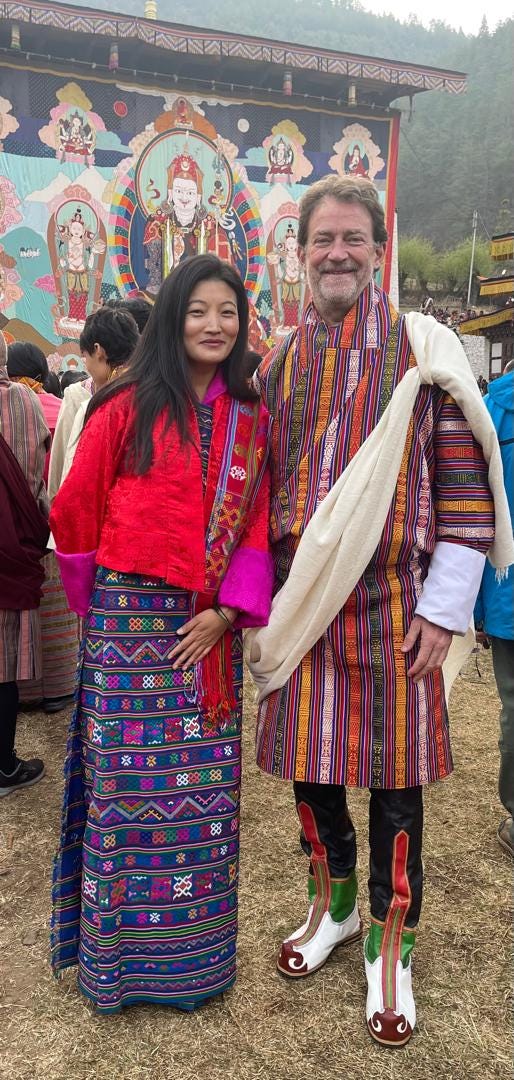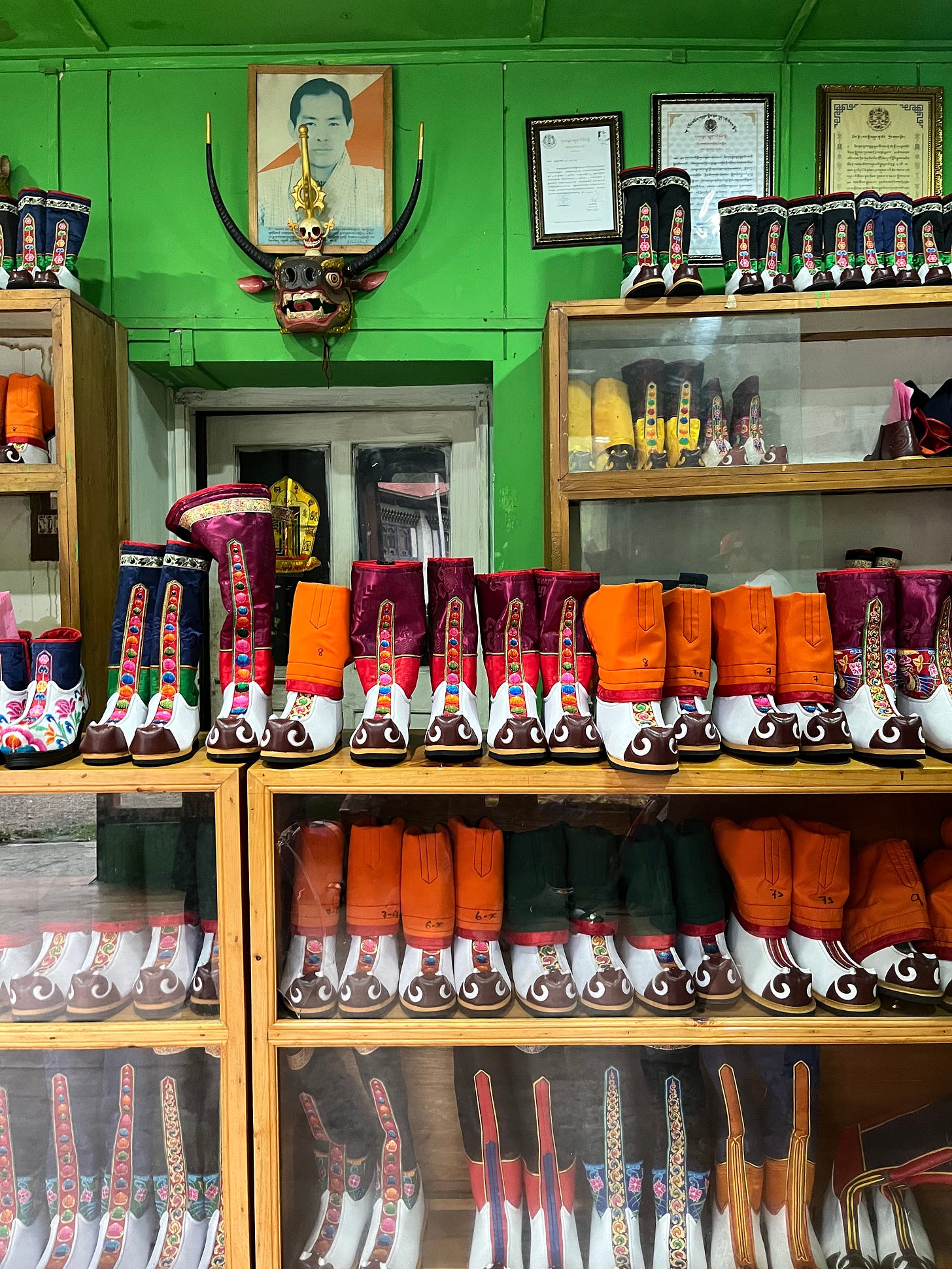#13 w-report journeys to Bhutan
A HIKE A DAY KEEPS THE DOCTOR AWAY IN THIS-- VERY REAL --MAGIC KINGDOM
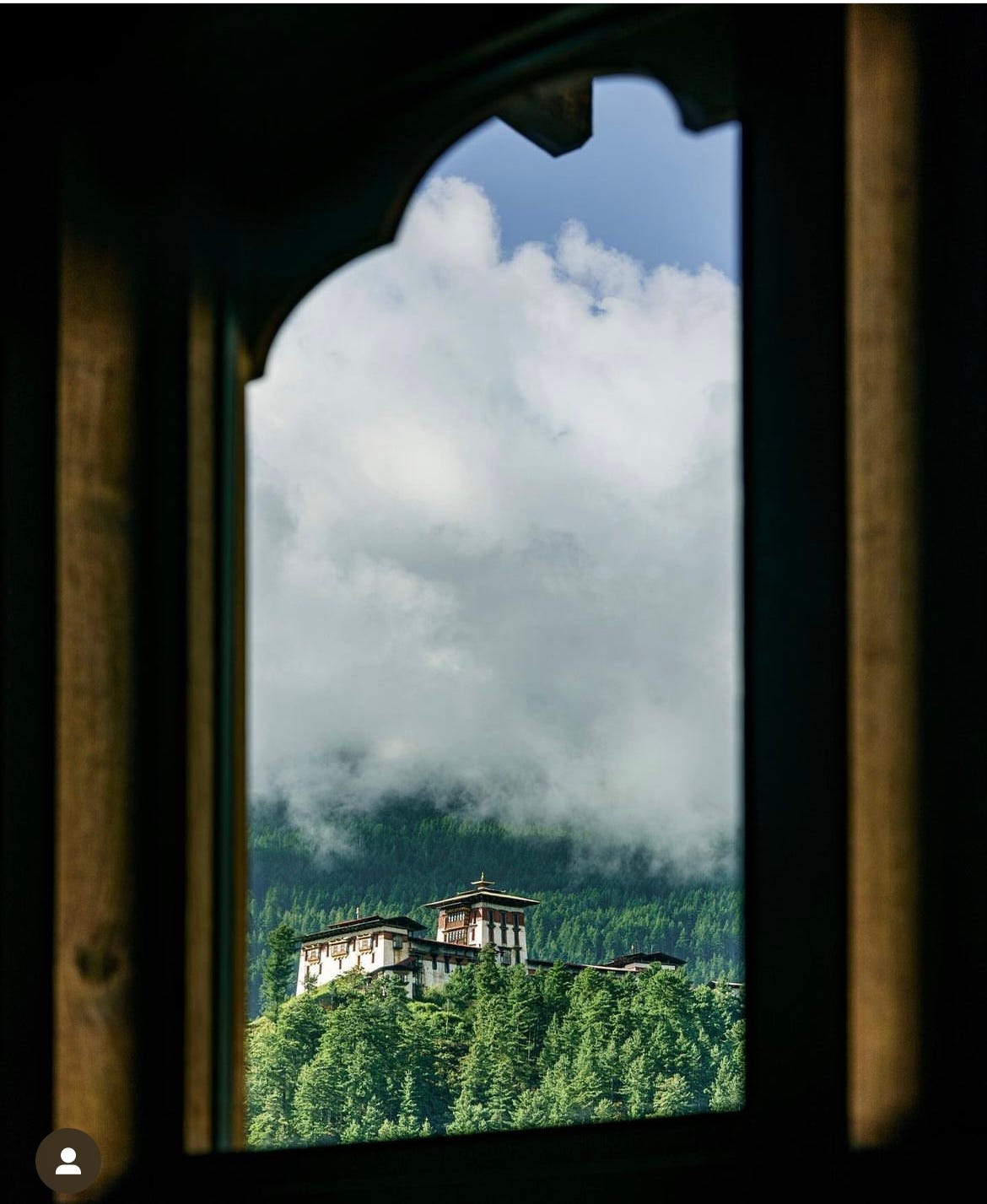
WHY BHUTAN NOW: Of all the work adventures I went on in the last year, a trip to Bhutan, spent mostly walking, was —hands down—the most inspiring and life changing. The country feels like the last place on Earth that is doing things right: they are the only carbon negative country in the world and famously measure their progress not by profit but rather by what they call the GNH (Gross National Happiness) Index.
HOW TO BEST EXPERIENCE THE COUNTRY: Walking, walking and more walking. Bhutan has some legendary hotels—the Amankora Lodges, the Six Senses—but what really makes spending the daily Sustainable Development fee in the country worthwhile (it’s now $100) is walking through its mountains and valleys and experiencing its culture. In general there’s something about hiking, especially in pristine nature, that not only pushes one’s body, but clears the head and opens the mind. Friedrich Nietzsche, who was inspired by Buddhist thought, once said, “All truly great thoughts are conceived while walking.” A study from Stanford University suggests that frequent walkers are better creative thinkers, and another Stanford study showed that those that walk in nature (as opposed to a city environment) are significantly less depressed.
BUDDHISTS DO IT BETTER: Of course the best thing about walking is that you can do it anywhere, but if you have the budget and time to splurge on a trip to Bhutan, do it. Exploring the country by foot allows for a profound initiation into Buddhist thought; many of the most uniquely beautiful points to hike to, like the legendary Tiger’s Nest, are temples, remote Buddhist schools or monasteries.
Throughout my time in Bhutan, I couldn’t help but thinking that, in many ways, the Buddhists have it right. Those of us brought up within one of the three major monotheistic religions—Christianity, Judaism, and Islam--- have faith that our “good deeds” (some of which are up for serious debate) will allow entry into a final stop called heaven, but Buddhists believe that we return to earth again and again. That must certainly encourage a more conscious and protective view of both nature and other beings, a perspective that we could all really use now.
TAKE A FRIEND WHO INSPIRES YOU: I went to Bhutan to profile the CEO of the safari company &Beyond, Joss Kent, who was opening up the company’s first safari camp outside of Africa. Someone I have known for years, the lovely Berlin baker Cynthia Barcomi, decided to join me. It was an ideal scenario where I was hiking through pristine landscapes and interviewing Joss, an innovative visionary in the field of sustainability, while also having heart felt conversations with a good friend.
TRAILS OF ENLIGHTENMENT
Of all the extraordinary walks I went on, and there were many, including what must be the most renowned—the pilgrimage to Tigers Nest—there are two that really stood out.
HIKE #1
LOCATION: PUNAKHA VALLEY
A three-hour drive from Thimphu along windy roads up and down a mountain pass.
WHERE TO STAY: &Beyond Punakha River Lodge Rates from $US1130 per suite per night for double occupancy and includes all meals, sundowners, and hikes and cycling.
THE ADVENTURE: TAKE A WALK IN SOMEONE ELSE’S SHOES
At the &Beyond camp opening party for staff and locals, I met Sonam Dorji, also known as Bull, a regional leader and the chairperson of the Punakha district. When I asked him what I should not miss in the area, he asked me if he could take Cynthia and I on an adventure the next morning. I never say no to such invitations, so he picked us up in a jeep the following day and we drove for almost two hours on a bumpy stone track to a remote village. There had been some flooding some weeks before, so before we arrived at the village we had to park the car and walk the rest of the way, as the road was too damaged to continue driving on. Bull wanted to show us what he said was the oldest house in the valley, one that hadn’t been renovated or modernized and was still lived in by a middle-aged woman who was living on her own.
We walked ten minutes up the washed out road and then over a small river into a village called Tongshina which is only accessible by foot along narrow paths through ricefield terraces. The contrast of the extreme beauty of our surroundings—psychedelic green rice fields backed by forested mountains—with the village’s extreme circumstances —the families who lived here had to walk hours to get basic supplies and care— was surreal. Entering this wildly remote village without wifi, electricity or roads was like traveling through a portal to another era as well as a completely different reality from our own. That sensation was exaggerated even more when, after 20 minutes of zig zagging through the rice fields on elevated narrow mud paths, we arrived at the home of Tshering lham, a three-story structure that Bull estimated was at least 400-years-old, constructed of mud bricks. Greeted by Tshering in her entrance courtyard we followed her up two steep ladders (domestic animals were typically kept on the bottom levels so the ladders kept them from the other floors) to the third floor, most of which was taken up by a large room with a dramatic open fire kitchen— a black pot was heating up over low flames and smoke was swirling throughout, and a sitting room, where we sat on mats on the floor and sipped on traditional Yak butter tea.

Bull and Tashi translated for us as we asked Tshering questions about her life and home. She told us she’d like to eventually renovate her house to allow for electricity and normal stairs (although she was still able to go down those ladders like a slide) and when we said we were from Germany she immediate told us she hates the country because her ex-husband had left her for a German woman. When we left it started to rain so she and Cynthia traded shoes (Tshering’s very practical and colorful rubber boots for Cynthia’s plastic Birkenstocks) and she showed us a short cut through the ricefields back to the main road. By the time we got back to the car we were soaked, but completely elated and grateful for our adventure in the ricefields.
HIKE #2
LOCATION: THIMPHU
WHERE TO STAY: BHUTAN SPIRIT SANCTUARY Rates start at $600 a night for a Balcony room.
THE ADVENTURE: SECRET MOUNTAIN MONASTERY
We had a fantastic guide while in Bhutan—Tashi Phuntsho- who kept us engaged for hours and days with his knowledge and stories. What captured my imagination the most were the legends about the Guru Rinpoche, Bhutan’s most important religious figure, who was said to have hid treasures, also known as “terma” (which could be relics, old writings and revelations) throughout the country. It’s said that they would eventually be revealed—this reminded me of the legend of King Arthur and the sword— at an auspicious time —through meditation or visions—by a powerful Buddhist visionary, in order to bring wisdom and teaching in a time of trouble.
His tales came alive for me on a hike, recommended by John Reed, an ex-Aman executive and an acquaintance of mine who has lived in the country for years (see below), to Dodedrak, a 12th-century temple and monastery hidden in the forested mountain side above the royal palace in Thimphu. It took Cynthia and I about 90-minutes to ascend a winding path up the slope of a leafy mountain fluttering with prayer flags. We continued down the other side, until we finally reached a beautiful decorated gate welcoming us to this remote monastery, now also a Buddhist university. A colorfully painted map, like something out of a Wes Anderson mood board, stood before us, with the actually village in the distance, and as we continued towards it, we came across signs—nailed onto a branch of a tree or mounted on a stone—that had sayings painted on them: “No Beauty Shines Brighter than a Good Heart” “Holding Onto Anger is like Drinking Poison and Expecting the Other Person to Die”
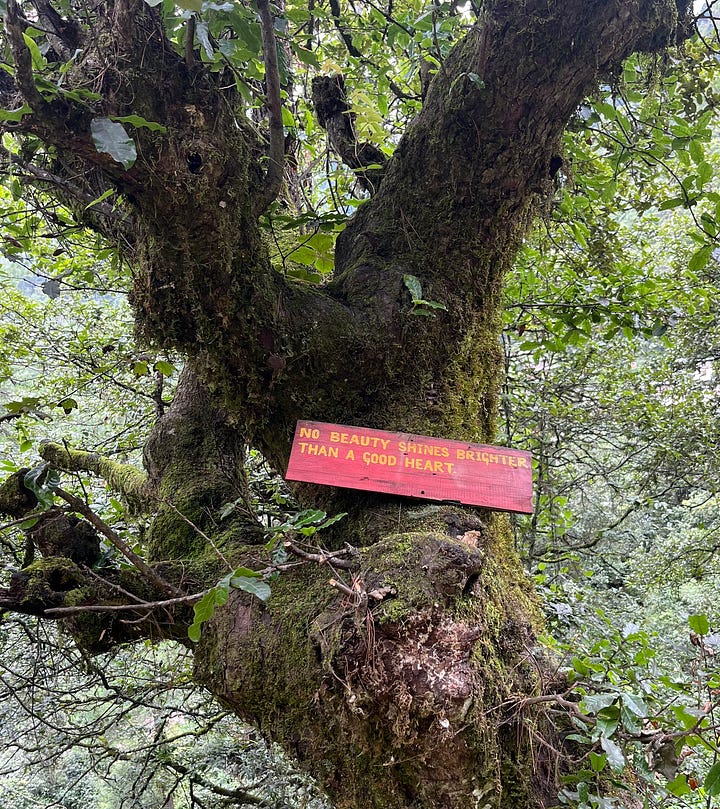
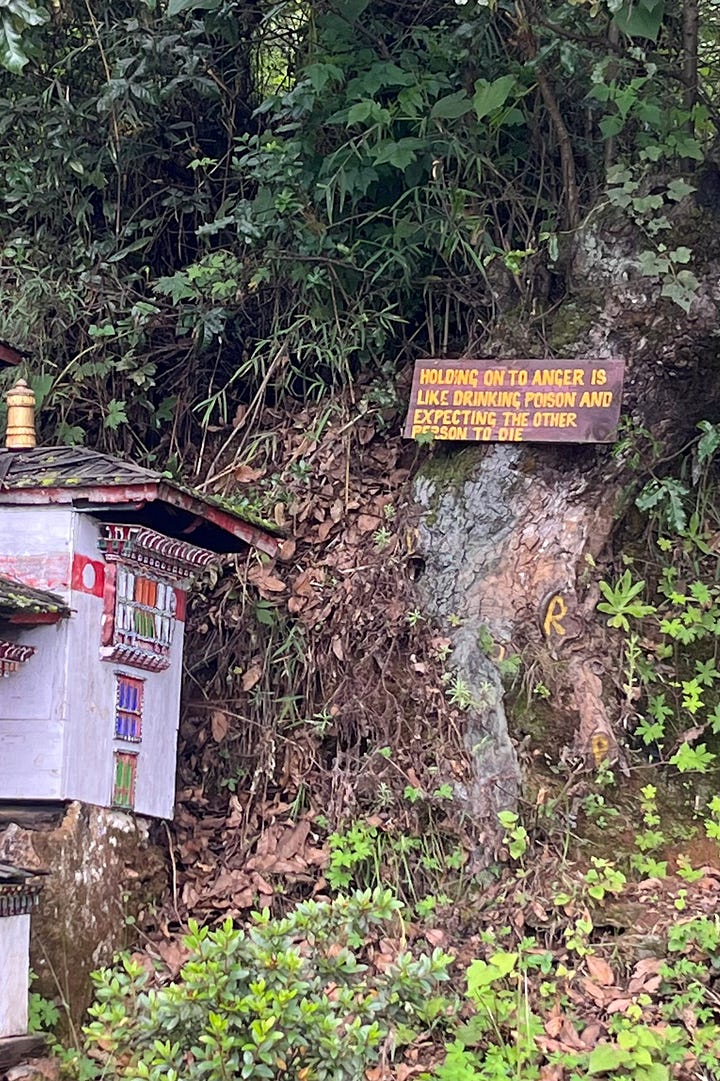
As we got closer, we heard the transporting sound of deep chanting which seemed to vibrate out from the main temple; monks in red robes walked on stone paths to the different buildings. One of them with round John Lennon glasses greeted us and offered some tea in a lounge covered in bright fabrics. He told us that about 180 monks between the ages of 15 and 28 live here and that he was officially in charge of visitors but that we were the first to visit in three months!
Later we were escorted to the original ancient temple which was said to have been built by Yonten Thaye, in the 12th century, onto the face of a huge rock split in half. Everything about this temple felt and appeared like something out of a sacred ancient painting, from the hundreds of yak oil lamps burning in a small enclosed wooden structure to the sacred 900-year-old murals protected under fabric in the altar room that we had the privilege of viewing.
Months later I am still thinking about this magical place, looking back at the pictures I took there to make sure it all really happened.
BHUTAN INSIDERS: Sonam Choden of bespoke travel company Bhutan in Style and her husband, John Reed, a former Aman executive and GM. John Reed is a much respected hospitality visionary who worked for the Aman resorts for many years—in its glory days—and helped to build the Aman circuit in Bhutan. He has lived in the country for about two decades and is currently the wellness development advisor to King Jigme Khesar Namgyel Wangchuck for his ambitious plan to transform the small Bhutanese city of Gelephu, near the Indian border, into a ‘mindfulness city’ with the help of star architect Bjarke Ingels and his BIG agency. The King has said this new hub will be shaped by “conscious and sustainable businesses, inspired by Buddhist spiritual heritage and distinguished by the uniqueness of the Bhutanese identity.”
John & Sonam’s ideal nine day program:
Thimphu 2 nights —Gangtey/Phobjika 2 nights—Punakha 2 nights—Paro 3 nights
Potential visitors always ask us why so many nights in Bhutan, thinking it will be too much. However, each valley truly has so much to offer, the diversity of flora and fauna, the dramatic landscapes, the monuments, temples, monasteries, hikes and village hamlets.
Favorite activity in each valley:
Thimphu – Get up early to observe morning prayers at the Zilukha nunnery. The beautiful melody of the nuns chanting is a beautiful start to the first full day in the Kingdom. After breakfast, hike to Dodedrack (the Hidden Village) and have lunch with the monks there.
Punakha – The Giligang Trail. A hike from Khamsum Yulley Chorten—a stupa built by the Queen Mother in 2004 to bring peace and harmony to all living things—to Punakha Dzong. Giligang Temple is a 300-year old privately owned monastery which has been taken care of by the same family for generations. Aum Kortem and Ap Sangay Wangchuk are now in their seventies and have resided in the monastery for more than 50 years. They live on the money they make from growing and selling chillies and other vegetables, and are always very excited to welcome guests.Make sure to spend an hour to sit and meditate in the main altar room of the Dzong — the energy there is pure and profound.
Gangtey – The Longtey Hike, which takes you from a small village up dwarf bamboo covered hills into an enchanted forest out of Lord of the Rings. When the rhododendrons are in bloom in March to May, it’s at its more beautiful! Follow this with a hot stone bath in the village and a Potato Shed Dinner at Amankora.
Paro – Its hard to beat Tigers Nest—it’s a must.
IF YOU HAVE EXTRA TIME TO MAKE IT TO BUMTHANG
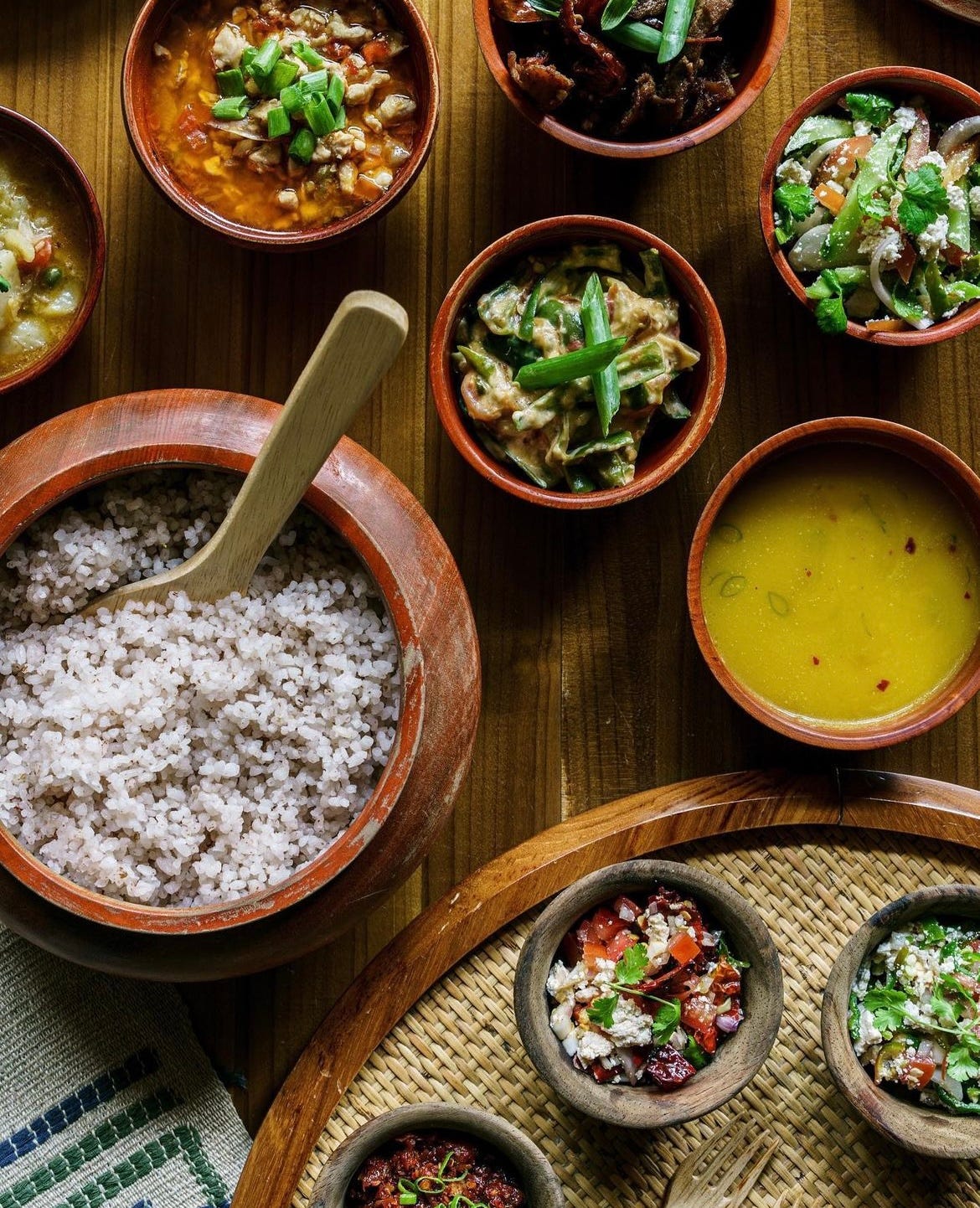
According to John and Sonan, the next best thing about the Bumthang region, besides its beautiful temples, are these two unique food experiences.
A ROYAL BUMTHANG FARMHOUSE LUNCH
To experience not just traditional Bhutanese food in authentic surroundings, but also Bumthang specialties made from local products such as buckwheat, Bhutan in Style can organize a visit to a family that has cooked for the Royal family for generations. Their idyllic farmhouse is located in Dorjibi village—a 25 minute drive from Jakar Town- near a river in Choekhor Valley. The lady of the house, Aum Tshomo, spends the entire morning preparing a range of local dishes, including some of the Royal family’s favorites to enjoy along with their homemade local wine, ara.
BEER & CHEESE TASTING AT RED PANDA BREWERY
The Red Panda Brewery was started in 2006 by Fritz Maurer, originally Swiss but a Bhutanese citizen since 1976. His brewery was the first established beer brewery in the country, and he is still the sole producer of Weiss bier. A visit to the brewery includes a 30-minute tour of the premises to learn more about the production process of Red Panda, the ingredients, and the history of the beer. The tour will be concluded with a tasting of Red Panda beer and local cheese in the brewery’s garden. For those who prefer non-alcoholic beverages, Bumthang produced apple juice from across the road is also available.
John & Sonam’s Favorite Properties—Splurge and Save— in each region.
Choosing the right hotel in each region can seem overwhelming, especially if you don’t have the budget to stay at the Amankora Lodges (about $2500 a night for two people sharing including all meals and drinks) which tends to get all the media attention. Very few outlets cover the more affordable places to stay, which is why in addition to their favorite high-end properties, we asked John and Sonam for their top affordable options as well.
Thimphu SPLURGE-Six Senses SAVE-Himalayan Keys
Punakha SPLURGE -&Beyond River Lodge SAVE- Dhumra Resort
Phobjika SPLURGE- Gangtey Lodge SAVE-Dewachen Hotel & Spa
Paro SPLURGE-Amankora SAVE-Himalayan Keys (same as Thimphu)
WHAT TO TAKE HOME: Custom Bhutanese boots from TRADITIONAL BOOT HOUSE in Thimphu





